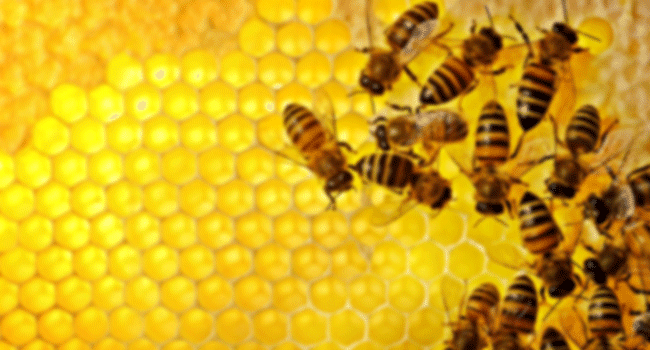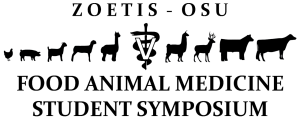By Jay Evans
Old Time Bee Legions
Few people are more attuned to honey bee behavior than Cornell University Professor, Thomas Seeley. From his explanations of food storage across frames of bee hives to his laborious research detailing how bees vote while house-hunting, his theories have held up well to careful experiments by his group and many others. Recently, he and his students have produced provocative work that challenges the ways many of us keep bees. While speaking at the recent Eastern Apicultural Society meeting he left many in the audience believing he had found a new path for healthy bees. Others felt he had for once lost his way, at least when his insights are applied to practical beekeeping. By reading the papers describing core parts of his emerging paradigm for healthy bees, believers and skeptics alike will find fascinating ideas and hard-won data about bees in the feral environment.
A core trait of Prof. Seeley is patience, and one paper describes a seven-year study of feral honey bees living near his home base in upstate New York (including Arnot Forest, the site of 40+ years of honey bee research, see my tourist photo near there!). For an Open-Access article in the journal Apidologie, “Life-history traits of wild honey bee colonies living in forests around Ithaca, NY, USA “(DOI: 10.1007/s13592-017-0519-1) Seeley monitored 33 feral honey bee colonies. He also established 35 swarms in ‘rustic’ Langstroth hives (set up to mimic natural hives in size, hive opening, and open space for drone cell building). A ‘life history’ reflects the major landmarks and decision points of an organism’s life such as birth, growth, reproduction, senescence, and death. As a useful concept for biology, and arguably beekeeping, it helps to think of life histories as a series of choices, all of which have costs and benefits. For example, at the individual level it is generally accepted that worker bees progress from nurses to foragers when they are two weeks old. However, under certain environmental stresses workers tend to rush things, foraging prematurely. Early foragers sound great for harvests, but they carry a cost when these foragers die young or fly poorly, or when this early switch means indoor chores are neglected.
Life histories can be applied to whole colonies as well. The study of all physical traits of social insect colonies and their occupants from birth until death is termed sociometry. If you are especially keen to know the norms for growth, puberty and middle age for honey bee colonies (would want people to know this is for whole colonies, not individual bees!), Seeley and students Michael Smith, and Maddie Ostwald followed colonies living in large observation hives from when the swarm first inhabited the nest, through maturity, and until death, to resolve their colony life histories (“Honey bee sociometry: tracking honey bee colonies and their nest contents from colony founding until death”; doi:10.1007/s00040-016-0499-6). In fact, Smith reviewed this and other privacies of developing bees in this magazine last year (www.beeculture.com/colony-ready-puberty-talk/).
In the case of Professor Seeley’s work, a key life history trait is the colony’s decision to swarm, and the colony size at which swarming happens. The unmanaged hives in rustic homes were especially insightful because both brood and adult disease symptoms could be scored. While there was a strong connection between high mite counts and death by the following survey, these colonies still fared well, never dying during Summer months and (for fully established colonies) showing only 21% colony losses over Winter. Remarkably, 87% of colonies requeened each season, presumably reflecting high swarming rates. The truly feral colonies, in buildings and trees, also did well, succumbing only to bears and storms in the Summer and showing 84% survival over Winter.
Smith, Seeley and Carter Loftus carried out hive experiments to determine the impacts of swarming on average mite loads (“How honey bee colonies survive in the wild: Testing the importance of small nests and frequent swarming”; doi:10.1371/journal.pone.0150362). For this study, some colonies were housed in a single deep 10-frame box while others that were kept closer to the beekeeping norm, with ample space. Mite levels were three-fold higher in colonies that were deterred from swarming when compared to colonies housed in a way that induced frequent swarms. With the exception of one sampling date, swarm-friendly beekeeping led to far fewer mites. Colonies that were discouraged from swarming reached and maintained mite counts above an unhealthy five mites/100 bees from mid-Summer onward. The swarm group never grew large, barely reaching 10,000 bees on average by the end of the season, an expected tradeoff in these highly ‘reproductive’ colonies.
As far as applying these hard-won insights to your own bees, it is likely that many people (or their neighbors) will not embrace an “if you love something set it free” approach to hive management. At the same time, the insights derived from these studies are applicable to many management schemes for reducing mites and aiding bees, from planned ‘brood breaks’ to the timing of splits or treatments, so they should not be ignored. And they provide yet another neat insight into what bees and other social insects have evolved to do for millennia.
Jay Evans is the Research Leader for the USDA Honey Bee Lab in Beltsville, MD.










